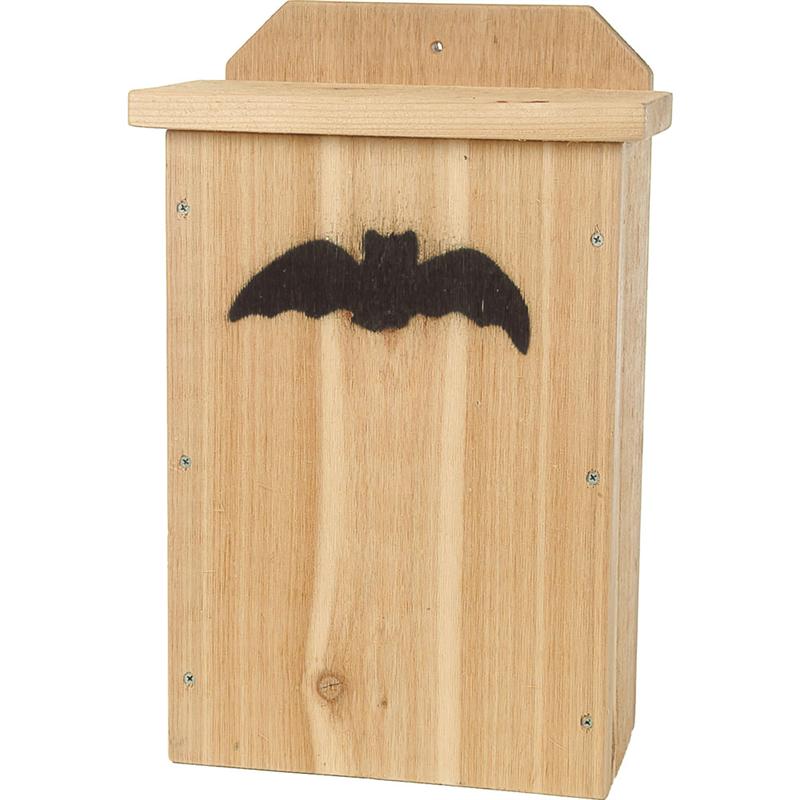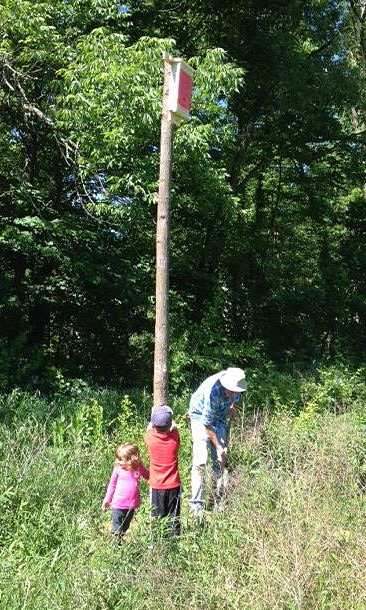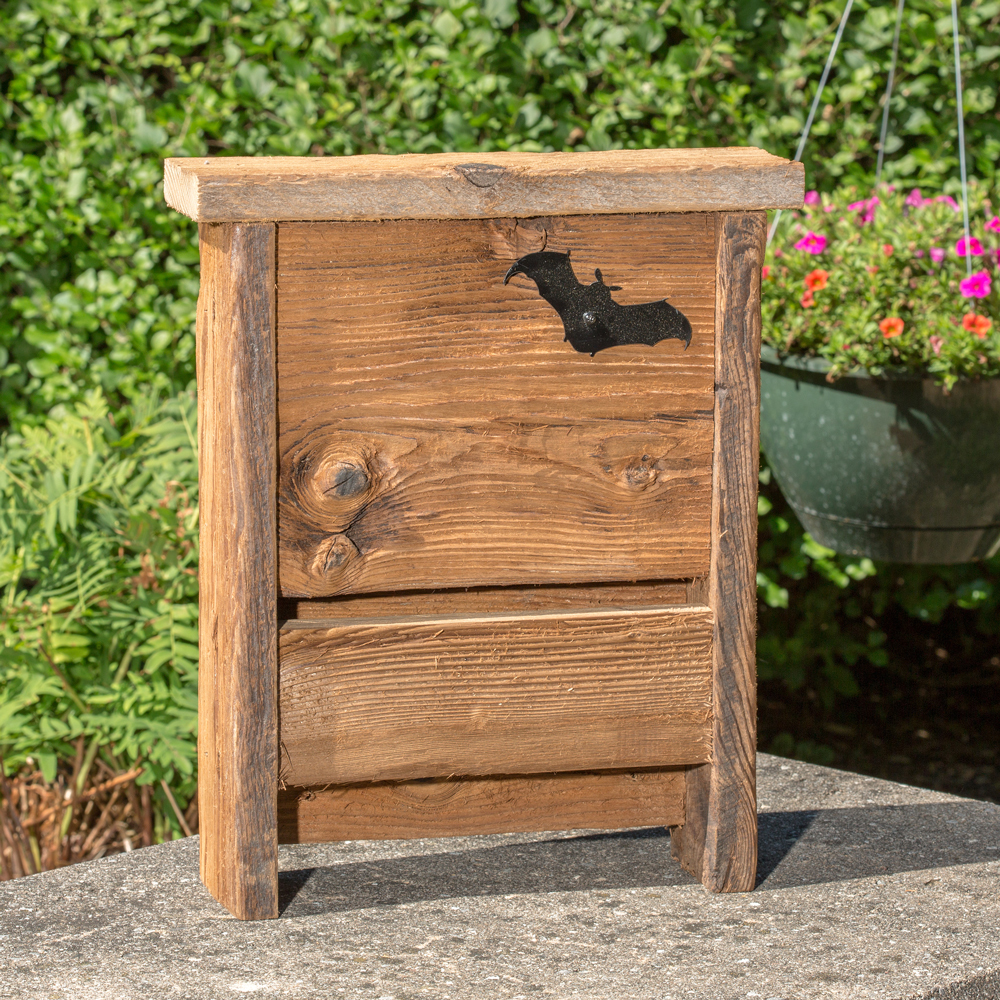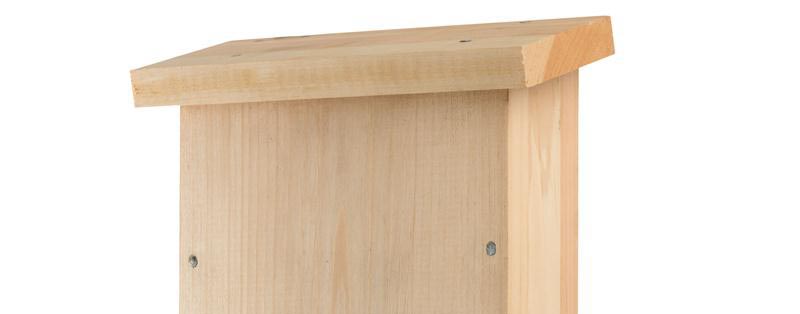
Installing a bat house is a simple, environmentally-friendly way to greatly reduce mosquitoes and other insects near your home. A single little brown bat can eat hundreds of mosquitoes in just one hour!
According to batrescue.org, the little brown bat is also one of the world’s longest-lived mammals for its size, with a life span of almost 40 years. Um, that’s a LOT of mosquito eating! Imagine if you had a whole colony of these friendly flyers near your home:goodbye, mosquitoes (or at least a whole bunch of them).
Putting up a bat house that will successfully attract a colony of bats requires a bit of know-how. Read on for some important suggestions to give you a better chance of success!

• Location, location, location! The placement of a bat house is vital to its success in attracting a colony of bats. First, the house should be located in a place that gets at least several hours of sunlight each day. Even though bats do not like sunlight, they need its warmth to raise their young. Bat houses provide a dark, warm place to do this. To encourage maternity colonies in summer, internal bat house temperatures should stay between 80º-100º F for as long as possible during the day. Second, locate your bat house near water if possible. Studies show successful bat houses are located no more than ½ mile from a body of standing water such as a pond or lake. This gives the bats a reliable source of drinking water. Finally, if possible, place the house in an area of mixed vegetation such as a wooded area, or an area where there is a mixture of agriculture and natural vegetation.

• Mount the house correctly. Bat houses may be mounted on poles, buildings or trees. In studies, those mounted on trees were slightly less successful. Those mounted on poles or buildings are more successful because they provide the most protection from predators. Bat houses can be safely mounted on houses, barns or other structures, and they will be more likely to attract bats if there are already bats attempting to live in any of the buildings. For pole mounting, two houses mounted back to back (one facing north, the other facing south) is an ideal combination. Use a wooden or metal pole and mount the houses 15-20 feet off the ground. Make sure there are no obstructions nearby so the bats can fly in and out freely. For mounting on a building, wooden, brick or stone structures are best, and single-chamber bat houses work well. Install the bat house near the building’s roofline or under the eaves where it will still receive plenty of sunshine. Place it away from bright exterior lights.
Lehman’s Tip: Be sure your bat house is properly and securely anchored to prevent it from falling down in high winds and storms.

• Timing is important. You can install your bat house any time of year, but the chances of success within the first year are increased if the house is mounted before the bats return in spring. Experts suggest installing the house in February or early March. This way the house can sit empty for a few weeks before bats actually come into the area, making for a more natural habitat (one that hasn’t been touched recently by humans).
• Practice patience. Even after you properly install your bat house, you should allow at least two summers for bats to find and occupy it before moving it somewhere else. Once a month, check your bat house with a flashlight until it becomes occupied. If the house hasn’t been occupied after two full years, try another location.
Lehman’s Tip: If bees or wasps move into your bat house before the bats do, remove them with a garden hose. Do not use insecticides, as these can seep into the wood and harm future bat residents.






























